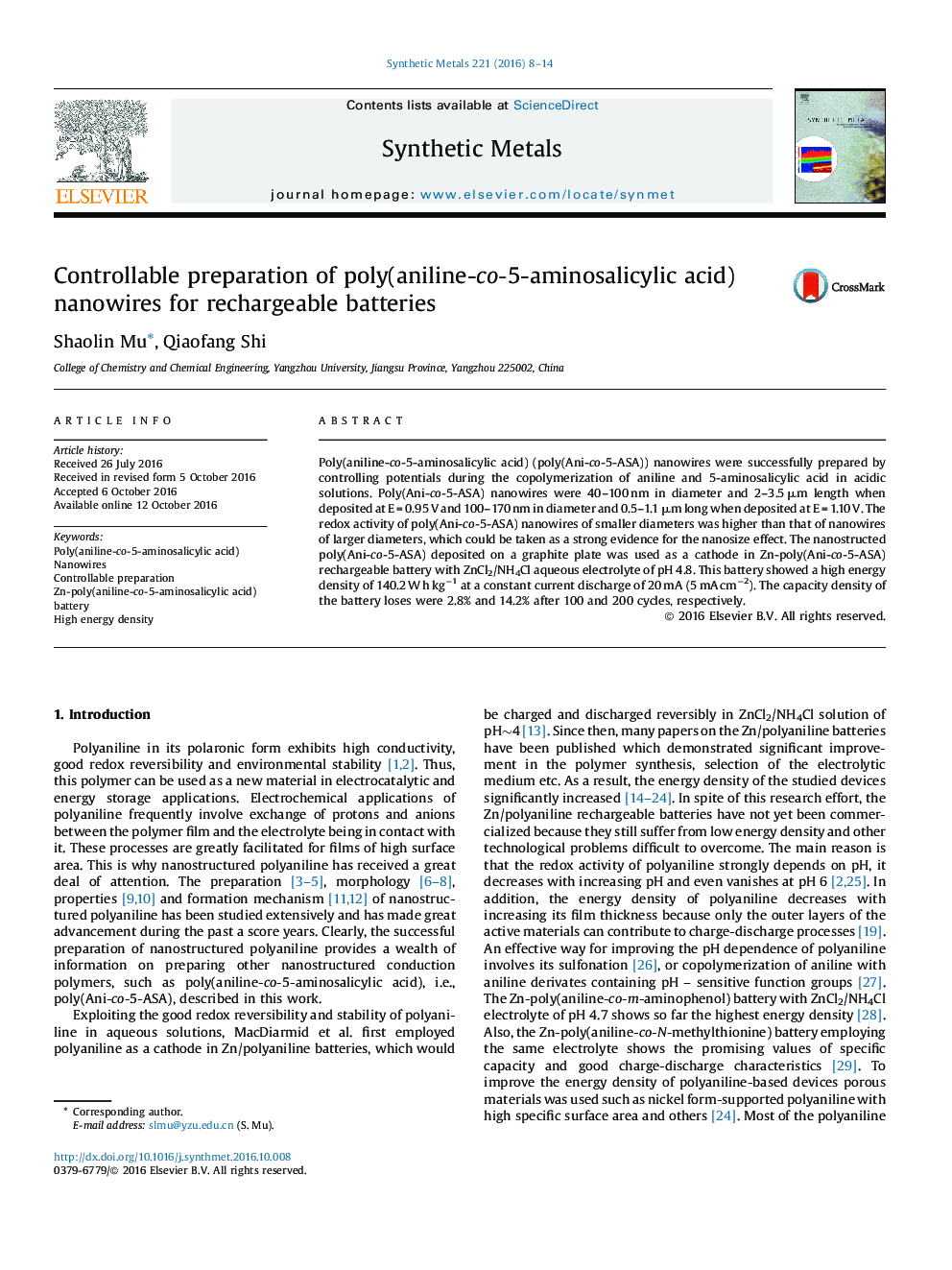| Article ID | Journal | Published Year | Pages | File Type |
|---|---|---|---|---|
| 5435560 | Synthetic Metals | 2016 | 7 Pages |
â¢Poly(aniline-co-5-aminosalicylic acid), poly(Ani-co-5-ASA), with two pH functional groups.â¢Poly(Ani-co-5-ASA) nanowires are prepared by controlling potentials.â¢The dependence of the redox activity of poly(Ani-co-5-ASA) is strong evidence of nanosizes.â¢Nanostructured poly(Ani-co-5-ASA) is used to fabricate Zn- poly(Ani-co-5-ASA) battery.â¢Battery with the aqueous solution of pH 4.8 shows high energy density.
Poly(aniline-co-5-aminosalicylic acid) (poly(Ani-co-5-ASA)) nanowires were successfully prepared by controlling potentials during the copolymerization of aniline and 5-aminosalicylic acid in acidic solutions. Poly(Ani-co-5-ASA) nanowires were 40-100 nm in diameter and 2-3.5 μm length when deposited at E = 0.95 V and 100-170 nm in diameter and 0.5-1.1 μm long when deposited at E = 1.10 V. The redox activity of poly(Ani-co-5-ASA) nanowires of smaller diameters was higher than that of nanowires of larger diameters, which could be taken as a strong evidence for the nanosize effect. The nanostructed poly(Ani-co-5-ASA) deposited on a graphite plate was used as a cathode in Zn-poly(Ani-co-5-ASA) rechargeable battery with ZnCl2/NH4Cl aqueous electrolyte of pH 4.8. This battery showed a high energy density of 140.2 W h kgâ1 at a constant current discharge of 20 mA (5 mA cmâ2). The capacity density of the battery loses were 2.8% and 14.2% after 100 and 200 cycles, respectively.
Graphical abstractDownload high-res image (316KB)Download full-size imageSEM images of poly(Ani-co-5-ASA), prepared at 0.95Â V (A) and 1.10Â V (B).
